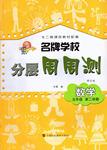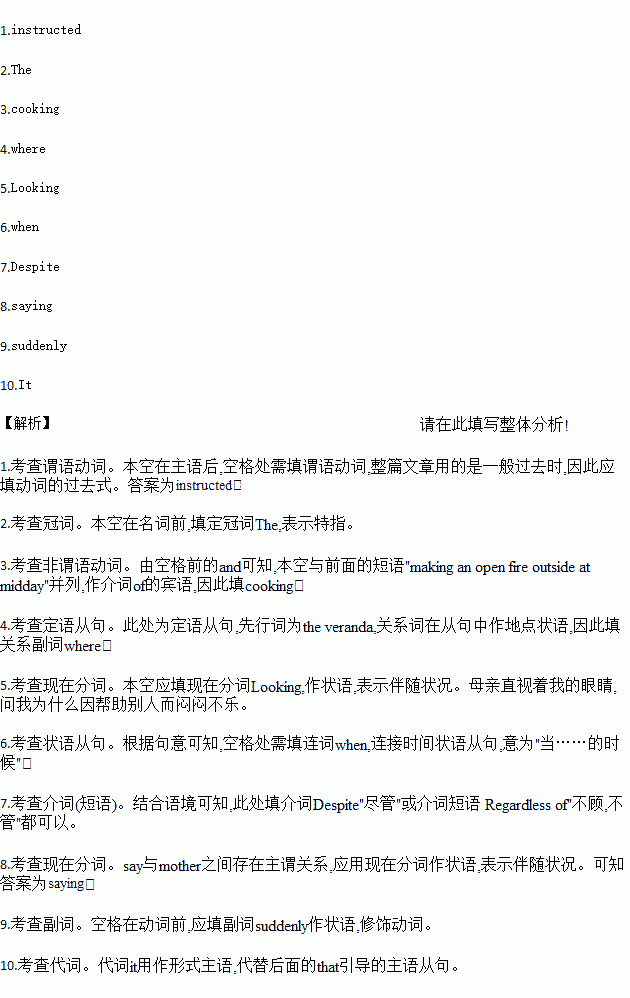题目内容
I remember the occasion when mother sent me to the main road, about twenty yards away from our house, to invite a passing group of seasonal work-seekers for a meal. She1.(instruct) me to take a basket along and collect dry cow dung(牛粪) for making a fire. I was then to prepare the meal for the group of work-seekers.
2. thought of making an open fire outside at midday,and3.(cook)in a large three-legged pot in that intense heat, was sufficient to upset even an angel. I did not manage to hide my feelings from my mother and, after serving the group, she called me to the veranda(走廊)4. she usually sat to attend to her sewing and knitting.
5. straight into my eyes, she asked “Why did you get angry6. I requested you to prepare a meal for those poor people?”7. my attempt to deny her blame,using the heat of the fire and the sun as an excuse for my rude behavior, mother, she gave me a firm look,8.(say), “You cannot detect what trouble may lie ahead of you.”
I9. (sudden) realized that if I had refused to offer this group of people a meal,10. would be impossible that in my travels some time in the future,I would get these individuals' help.
 互动英语系列答案
互动英语系列答案 名牌学校分层周周测系列答案
名牌学校分层周周测系列答案假设你是李华,在某英文网站上,你看到正在开展关于填报志愿时首先考虑专业还是大学的讨论。请根据下面所给的要点提示, 用英文给该网站发送一封电子邮件,向其描述普遍存在的两种观点及其原因,并谈谈你自己的看法。
观 点 | 理 由 |
首先考虑专业 | 1. 可以学习自己感兴趣的东西; 2. 便于将来从事自己喜爱的工作。 |
首先考虑大学 | 1. 学习环境对人的成长很重要; 2. 名牌大学的毕业生在求职时常会受到青睐。 |
你的看法? | |
要求:
1. 包括所有要点,可适度发挥,以使行文连贯;
2. 开头已经写好,但不计入总词数;
3. 词数100左右。
Dear Sir or Madam,
I’m writing in response to your discussion about the question: should I choose a good major or a good university first when I graduate from high school?
________________________________________________________________________________________
____________________________________________________________________________________________
____________________________________________________________________________________________
____________________________________________________________________________________________
____________________________________________________________________________________________
____________________________________________________________________________________________
____________________________________________________________________________________________
____________________________________________________________________________

